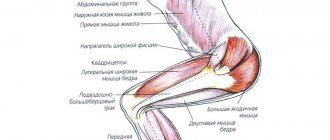Home » Health » Daily value of vitamins and minerals
For normal functioning of the body and its resistance to infections, a person needs to consume sufficient amounts of vitamins and minerals. However, the modern rhythm of life does not always provide such an opportunity. In addition, not all micronutrients (useful substances) come with food. There is a need to take additional vitamin and mineral complexes. You can buy them at any pharmacy; the composition is selected to suit the individual characteristics of the body.
What are vitamins?
They can be divided into two main groups:
- Fat soluble. Over time, they accumulate in the human body, excesses are deposited and can reach a critical level. This category includes vitamins of groups A, E, K, D. They should not be abused.
- Water soluble. This includes all the microelements of group B, as well as vitamin C, biotin and choline. They are characterized by lower concentrations, so they accumulate in the body more slowly.
Food sources
The main source of retinol is food of animal origin: fat from marine fish and mammals, liver.
100 g of halibut liver oil contains 25-30 mg of vitamin A, cod - 29 mg, pharmaceutical fish oil - 19 mg, pork and cod liver - 4 mg. A chicken egg (yolk) contains 0.13 mg of retinol, 100 g of butter - 0.4-0.6 mg, sour cream - 0.23 mg, cheese - 0.2-0.3 mg, milk - 0.025 mg. Vegetables and fruits contain a lot of beta-carotene, from which retinol is formed in the body. These are vegetables and fruits that are yellow, orange, red and green in color: pumpkin, melon, spinach, etc. Vitamin A is found in many seasonings: sage, paprika, oregano, hawthorn, basil.
Essential Minerals
- The first group is phosphorus, magnesium and calcium. Very important for a person to strengthen bones and prevent the destruction of tooth enamel.
- The second group is chlorine, sodium and potassium. Very often they are also called electrolytes. Their use plays a significant role in maintaining the water-salt balance at the required level.
- The third group is zinc, iron, iodine. They are not as important as the minerals of the previous groups, but their deficiency negatively affects the overall health and functioning of individual organs and the production of necessary hormones.
Vitamin deficiency: symptoms
| Vitamin | Symptoms of deficiency |
| A | A lack of beta-carotene is characterized by dry skin, especially in winter. There may also be blurred vision in the evenings. |
| AT 6 | The appetite disappears, the person feels a loss of strength, and becomes absent-minded. In most cases, hair begins to fall out. |
| AT 12 | A slight tingling sensation is felt in the limbs, accompanied by weakness in all muscle groups throughout the day. |
| WITH | Immunity decreases, the body fights the disease poorly and recovers slowly. Appetite noticeably deteriorates, the person feels severe weakness. |
| E | Symptoms appear only in advanced cases. Expressed as a lack of coordination. |
| IN 1 | The body begins to defend itself against infections worse, so the person feels weak and quickly falls ill. |
| AT 2 | The lack of this microelement provokes skin damage. They may appear as dryness, flaking or redness. |
| AT 3 | A person constantly feels tired and weak, hair begins to fall out, and nervousness increases. |
| AT 5 | The person sleeps poorly, feels slightly tired, and feels nauseous. |
To feel good at any time of the year, you need to consume vitamins and minerals, then the immune system will not weaken and the body will resist seasonal infections.
Mineral Deficiency: Symptoms
| Name | Impact on the body | Deficiency Symptoms |
| Zinc | Promotes the production of insulin, stimulates the formation of hormones and significantly strengthens the human immune system. | Causeless depression, severe hair loss and frequent colds. |
| Manganese | Maintains the required level of cholesterol in the blood. | Atherosclerosis, high cholesterol levels. |
| Magnesium | It ensures that the human body is always in good shape and removes excess cholesterol. | Mood swings, constant irritability, severe pain in the temporal lobe. |
| Fluorine | Helps strengthen bones, monitors the condition of teeth and tooth enamel. | The gums begin to bleed and I have toothache. |
| Iodine | Kills germs and calms the nervous system. | Lack of iodine in childhood can lead to mental retardation, memory impairment and coordination. |
| Chromium | Participates in carbohydrate and insulin metabolism. | Blood sugar levels increase, which soon leads to diabetes. |
| Sulfur | Stimulates constant blood clotting, helps produce energy reserves for the whole day. | Frequent constipation, high blood pressure and sudden hair loss. |
| Sodium | Maintains acid-base balance in the body. | Frequent stomach pain, constipation (poor digestion of food). |
| Chlorine | Promotes the production of hydrochloric acid. | Low stomach acidity, pain and, as a result, gastritis. |
| Phosphorus | Produces hormones and improves brain activity. | Osteoporosis, inattention, severe fatigue (chronic). |
| Iron | Stimulates blood circulation and monitors the normal functioning of the nervous system. | Anemia. |
| Calcium | Makes muscles more elastic, strengthens the structure of bones and teeth. | Possible cramps, hair becomes dull, nails begin to flake and break. |
| Copper | Allows the body to absorb iron more easily and makes the skin elastic. | Mental disorders, low body temperature. |
| Molybdenum | Monitors the normalization of metabolism, promotes the breakdown of fats in the body. | Constipation, sudden weight gain, stomach pain. |
One of the multivitamins contains minerals of different origins. It is recommended to consume seasonal vegetables and fruits in order to maintain the normal functioning of the body.
Table of vitamins, vitamin content in foods
| Name vitamin | What is it needed for | Daily norm | Signs of shortage | Best sources |
| A (skin health) | • Helps to grow • Makes the skin soft and elastic • Heals mucous membranes • Good for vision | 1 mg per day, 100-200 g of indicated foods | • Deterioration of vision at dusk • Dry and rough skin on the hands and calves • Dry and dull nails • Conjunctivitis • In children – growth retardation | carrots, parsley, dry apricots (apricots), dates, butter, ice cream, feta cheese. |
| B1 (gut health) | • Promotes normal nerve function • Supports muscle growth and function • Leaves skin smooth and velvety • Improves bowel function | 1-2.0 mg per day, in 300g of the indicated products. | • Lack of appetite • Constipation • Fatigue and irritability • Poor sleep | soybeans, seeds, peas, beans, oatmeal, buckwheat, millet, liver, bran bread. |
| B2 (lip and eye health) | • Protects mucous membranes • Participates in the metabolism of fats, proteins and carbohydrates • Good for the eyes • Protects from ultraviolet radiation | 1.5-2.4 mg per day, 300-500g of these products. | • Inflammation of the mucous membranes • Itching and pain in the eyes • Dry lips • Cracks in the corners of the mouth • Hair loss | green peas, wheat bread, eggplants, walnuts, cheese. |
| B6 (hair and nail health) | • Participates in the metabolism of amino acids and fat • Helps the functioning of muscles, joints and ligaments • Prevents atherosclerosis • Improves liver function | 2.0 mg per day, in 200-400 g of the indicated products. | • Dermatitis occurs • Development of arthritis, myositis, atherosclerosis and liver diseases • Excitability, irritability, insomnia | oat flakes, walnuts, buckwheat, pearl barley and barley, raisins, pumpkin, potatoes, hazelnuts, cottage cheese |
| D (bone health) "sunshine vitamin" | • Calcium and phosphorus metabolism • Growth and strengthening of bones • Supports immunity When taken together with vitamins A and C, it helps in the prevention of colds, helps in the treatment of conjunctivitis | 2.5 mcg per day, in 100-200 g of the indicated products. | • Fatigue, lethargy • In children – rickets • In adults – osteoporosis | egg yolk, porcini mushrooms, butter, sour cream, cream, Cheddar cheese. |
| E (sex health) | • Protects against carcinogens • Protects against stress • Maintains healthy skin • Promotes the absorption of proteins and fats • Has a beneficial effect on the sex glands • Helps the functioning of vitamin A | 10 mg per day, in 10-50 g of the indicated products. | • Muscle weakness • Infertility • Endocrine and nervous disorders | vegetable oil, nuts, grains and bean sprouts, corn, vegetables. |
| C (whole body health) | • Protects against infections • Strengthens mucous membranes • Prevents atherosclerosis and strengthens blood vessels • Normalizes the activity of the endocrine system • Prevents aging | from 75 to 150 mg | • The immune system weakens and ceases to fight off colds and runny nose | 1. Sea buckthorn, 2. Black currant, 3. Bell pepper (green), 4. Parsley, 5. Dill, 6. Rose hip, 7. Broccoli, 8. Kiwi, 9. Horseradish, 10. Cabbage. For comparison: oranges are in 12th place, lemons are in 21st, and grapefruits are only in 23rd. |
Who needs to carefully monitor their daily intake of micronutrients?
Risk group:
- The modern rhythm of life cannot always allow you to monitor regular, proper nutrition. A medicinal complex of vitamins and minerals is recommended for every person to take occasionally.
- If a person is actively involved in sports, then his body constantly needs to be fed with energy and useful microelements so that immunity does not decrease.
- For vegetarians. They are at risk because they do not consume meat, which contains many beneficial substances that have an important effect on health.
- Children and elderly people.
- With constant stress.
- When following a diet.
- During pregnancy and lactation. Vitamins and minerals for women (sufficient amounts of them in the body) are very important.
- For chronic and colds.
- People with bad habits (drinking alcohol, smoking).
- For those taking contraceptives and other hormonal medications.
Vitamins and minerals are mainly taken into the body through food, but sometimes it is advisable to take special medicinal complexes to improve your overall health. This recommendation applies to everyone - children and adults. It is especially important to think about health during the period of risk of colds.
Daily value of vitamins and minerals
| Micronutrients | Products | Norm per day (mg) |
| Thiamine (B1) | Cereals, chicken egg yolk, pork meat, chicken offal (or pork). | 2-2,5 |
| Group C | Grapefruit, oranges, lemons. Almost all citrus fruits contain this trace element. | 75 |
| Riboflavin (B2) | Kefir, cottage cheese, sour cream. Meat: rabbit, pork and beef. Vitamin B2 is also found in green peas, onions and dill, buckwheat, eggs and beef liver. | 2-3 |
| Iridoxine (B6) | Chicken offal, potatoes, bananas, yeast. | 3 |
| Group B5 | Seeds, any nuts, seasonal vegetables, all fruits. Also found in fresh meat (vitamin is lost when frozen, boiled or fried) | 10 |
| Folic acid | Cabbage (vitamins and minerals can be found here from almost all groups), green onions, orange, spinach, eggs, potatoes, avocados, leafy vegetables. | 1,5 |
| Vitamin B12 | Fish (low-fat), cottage cheese products, chicken meat, cheese. | 0,005 |
| Group A | Dairy products, fish liver, all greens, tomatoes, pumpkin, carrots, mangoes, oranges. | 1 |
| Group E | Wheat (sprouted seeds or young shoots), olive oil, leafy vegetables, eggs, nuts. | 0,0005 |
| Group K | Chicken liver, green tomatoes. | Produced by the body |
| Vitamin D | Chicken egg yolk, butter, fish oil, cream. | 0,01 |
| Iron | Meat – chicken, rabbit, turkey. If you are looking for vitamins and minerals for your hair, be sure to eat right. You can get enough iron from fresh fruits and vegetables | 60 |
| Iodine | The highest iodine content is in seaweed and other seafood. | 0,2 |
| Sodium | The direct source of sodium is regular salt, which absolutely everyone consumes daily. The microelement can also be obtained by eating fish. | 4 |
| Calcium | Mainly in dairy products. Also found in some fruits (winter pear). | 600 |
| Fluorine | Wholemeal flour and all seafood. | 0,7 |
| Magnesium | Buckwheat, oatmeal, any nuts. | 300 |
| Phosphorus | Meat, nuts, fish, cheese, milk. It is better to consume it with foods containing calcium. This makes it easier for the body to absorb. | 600 |
| Copper | Dried fruits, oatmeal and buckwheat, chicken and beef liver, chocolate, beets. | 2,5 |
The daily requirement of vitamins and minerals presented in the table is calculated for the average person. Sometimes, due to the individual characteristics of the body, the norm may be more or less.
Daily dose of vitamin A
The daily dose of vitamin A for women and men is different. This table shows the daily requirement of vitamin A for different population groups [1]:
| Age group | Vitamin A daily value in mg/day | Vitamin A daily value in IU/day | Upper permissible level of consumption, mg/day |
| Infants 0–6 months 7–12 months | 0,4 0,5 | 1333 1666 | 0,6 0,6 |
| Children 1–3 years old 4–8 years old | 0,3 0,4 | 1000 1333 | 0,6 0,9 |
| Daily value of vitamin A for men 9–13 years old 14–18 years old 19 – >70 years old | 0,6 0,9 0,9 | 2000 3000 3000 | 1,7 2,8 3 |
| Daily requirement of vitamin A for women 9–13 years old 14–18 years old 19 – >70 years old | 0,6 0,7 0,7 | 2000 2333 2333 | 1,7 2,8 3 |
| Daily intake of vitamin A for pregnant women less than 19 years old, 19 – >50 years old | 0,75 0,77 | 2500 2566 | 2,8 3 |
| Women breastfeeding <19 years 19 – >50 years | 1,2 1,3 | 4000 4333 | 2,8 3 |
Getting micronutrients from food
Natural foods contain vitamins, minerals and trace elements that have a positive effect on human health. In addition, there is dietary fiber, which is simply irreplaceable for ensuring normal digestion. These fibers reduce the risk of heart-related diseases.
In order to protect yourself and consume all the necessary nutrients, you should always monitor your diet. The daily bustle does not always allow this to be done, so very often a person feels weak and drowsy (caused by a deficiency of micronutrients).
Daily value markings on jars
Each jar of vitamins produced in the USA that you buy on iHerb.com is required to have standard labeling. It is the same everywhere because it must comply with FDA regulations. The far right column of this table indicates the percentage of the vitamin or mineral in the dose of this remedy from the recommended amount of each substance.
The picture shows vitamins for adult men.
Moreover, in the case of vitamins for children, the table should indicate percentages of the daily value
The picture shows children's vitamins.
Vitamin complexes
If the body lacks micronutrients, it is recommended to start taking additional vitamin complexes. Be sure to consult with your doctor to choose the best option for you. There is a very large selection of medications; let’s look at the most popular ones today.
- Vitrum (17 minerals and 13 vitamins).
Helps strengthen the immune system and restore strength. Contains important vitamins and minerals for children and adults. No side effects have been identified, only an allergic reaction may occur if there is an individual intolerance to some components.
- Complivit (11 vitamins, 8 minerals). Increases the body's resistance to bacteria and microbes.
- Duovit. There are complexes for men and women with a different selection of micronutrients in the composition. A balanced drug that prevents the development of heart disease, improves the condition of nails and hair. Relieves stress and increases sexual activity in men.
A properly selected complex of microelements and vitamins replenishes the micronutrient content in the body, improves overall well-being, and relieves fatigue. It is not recommended to purchase medications without first consulting your doctor.
The role of vitamin A in the human body
Vitamin A is part of coenzymes and is involved in many processes in the human body. It performs different functions:
- Provides antioxidant protection.
Retinol neutralizes free radicals that damage cells and enhances similar properties of vitamin E. It reduces the risk of heart disease, alleviates the condition of people suffering from angina, prevents the death of brain cells and is a means of preventing rheumatoid arthritis, Alzheimer's disease, Parkinson's disease, multiple sclerosis, and other neurodegenerative diseases . - Increases regeneration.
The micronutrient has an anti-inflammatory effect, accelerates healing processes, and stimulates skin renewal. - Strengthens immunity.
Without vitamin A, the synthesis of interferon, lysozyme, and the formation of phagocytes of a number of other substances that protect humans from pathogenic bacteria and viruses is impossible. - Supports eye function.
The substance prevents the development of cataracts. It prevents age-related blindness due to macular degeneration and is necessary in the production of rhodopsin. - Prevents the formation of cancerous tumors.
The vitamin interferes with the growth of mutated cells in the prostate, mammary gland, lungs, and skin. Prevents the re-formation of tumors after surgical removal of tumors. - Affects the condition of ligaments, cartilage, muscles, bones.
The substance is involved in the formation of protein molecules, the metabolism of vitamin D, and maintains a sufficient level of mineral density in bone tissue. - Regulates cholesterol levels.
The micronutrient reduces cholesterol levels in the blood and maintains the health of blood vessels and the heart. - Supports reproductive ability.
The substance is involved in the synthesis of sex hormones. During pregnancy and lactation, it ensures the normal development of the child. - Prevents the formation of oxalate stones in the kidneys.
With sufficient intake of vitamin A in the urine, the concentration of oxalate crystals containing calcium is significantly lower.
Retinol slows down the aging process, maintains skin elasticity, healthy nails and hair. It is widely used in the treatment of skin diseases, acne, hyperkeratosis, hepatitis, chronic enterocolitis, and eye diseases.











